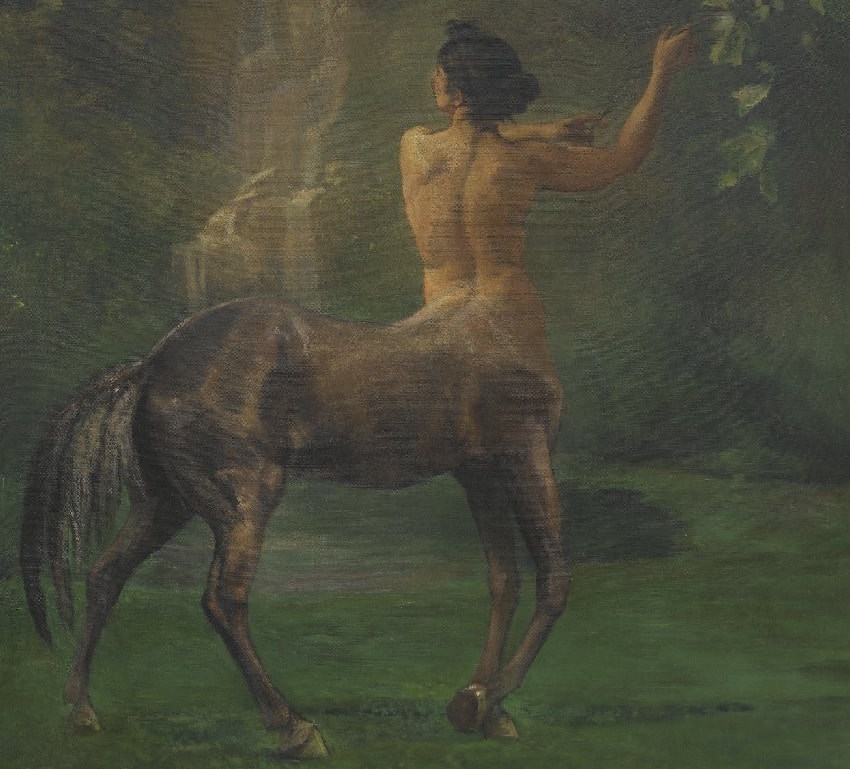
Table of Contents
The centaurs are among Greek mythology’s most intriguing creatures, known for their fascinating hybrid nature. Symbolizing the struggle between the animal and the human, the centaurs are connected to some of the most significant stories of ancient Greece.
Origins and Description of Centaurs
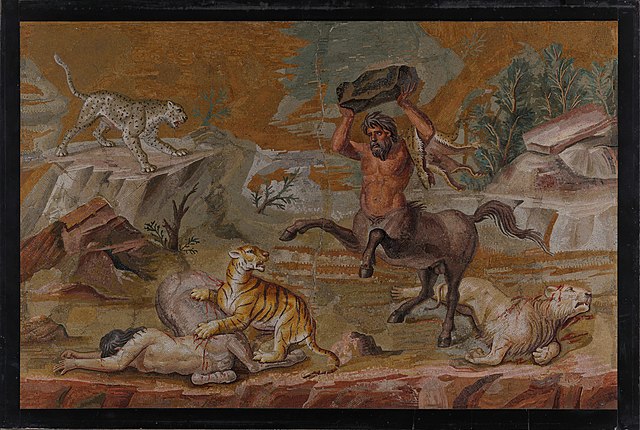
There are a variety of myths as to where the centaurs come from. Some old folktales refer to fantastic horsemen who were so proficient in horse riding that they seemed to be one with the animal. Especially in Thessaly, bull hunting on the back of horses was a traditional sport. Many people spent much of their time on the back of a horse.
It would not be rare for the myths of the centaurs to come from these traditions. Other tales refer to the centaurs as nature spirits who lived in the woods in the form of half-man, half-animal creatures.
In Greek mythology, the Centaurs were the offspring of Ixion, king of the Lapiths, and Nephele, a cloud nymph. They were half-human half-horse primitive creatures who lived in caves and hunted wild animals. They inhabited the forests of Thessaly and Arcadia and armed themselves with rocks and tree branches.
Their depictions show them as human down to the waist, from where they merged with the body and the legs of a horse. Their faces were human, although, in some cases, they had the facial features of a satyr.
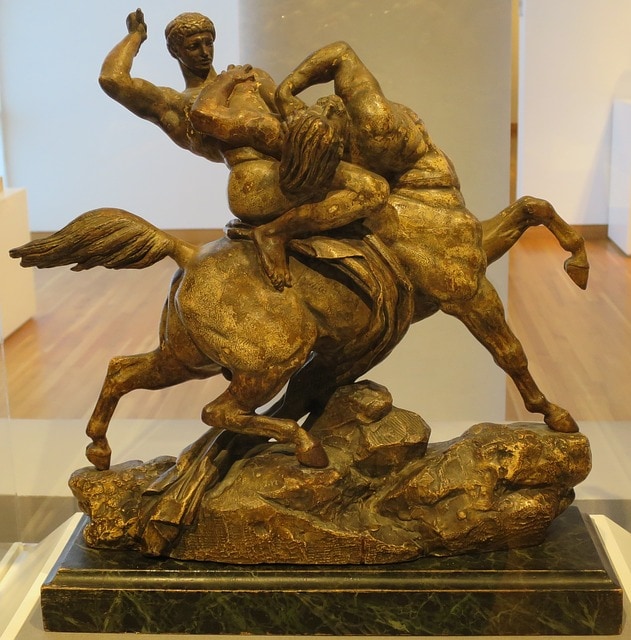
Myths of The Centaurs
The involvement of the centaurs as a group in Greek mythology is relatively small. Their most important issue as a race was the Centauromachy, but throughout Greek mythology, there have been various Centaurs who have stood out for their deeds.
1- Chiron
Chiron was an immortal centaur of major significance in Greek mythology for his role as the tutor of several heroes. Chiron was not like the others of his kind since he was a civilized and immortal creature known for his wisdom. In most depictions, his human side was stronger than his animal side, both physically and mentally.
It was he who trained Achilles and turned him into the great warrior he wound up being. Chiron gave Achilles the spear that he used in the war of Troy. In the Iliad, Homer writes not once but twice that the spear of the great hero was a gift from his tutor. Chiron was also the tutor of Asclepius, Apollo’s son and god of medicine, Heracles, and many other heroes. He was called the wisest and justest of all the centaurs.
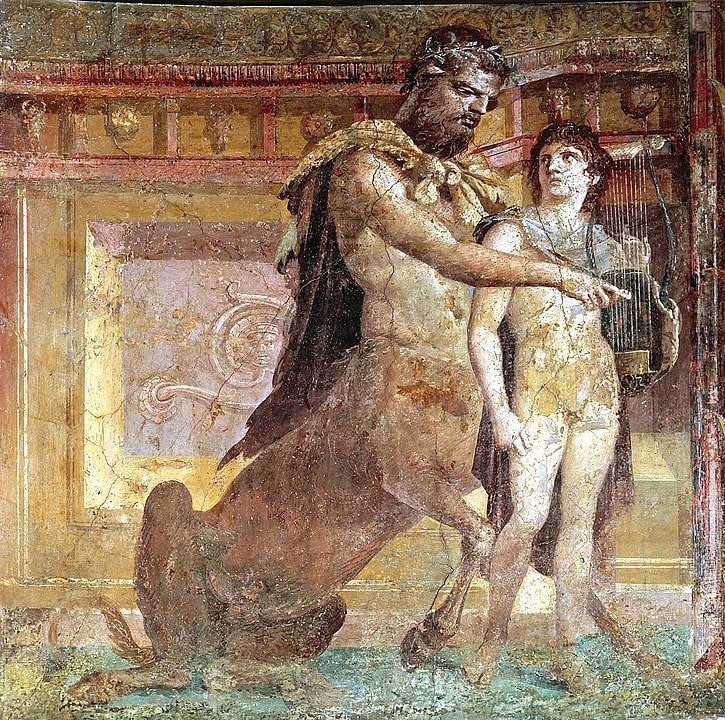
2- Pholos
Pholos was a centaur who dwelt in a cave on the mountain Erymanthus. The centaur once hosted Heracles while the hero was hunting the Erymanthian boar as one of his 12 labors. In his cave, Pholos welcomed Heracles and offered him wine, but the hero would not be the only guest.
Other centaurs smelled the wine and appeared at the cave to drink with them; after a few drinks, the centaurs began to fight and attacked Heracles. The creatures, however, were not a match for the hero and his poisoned arrows. Heracles killed most of them and the rest ran away.
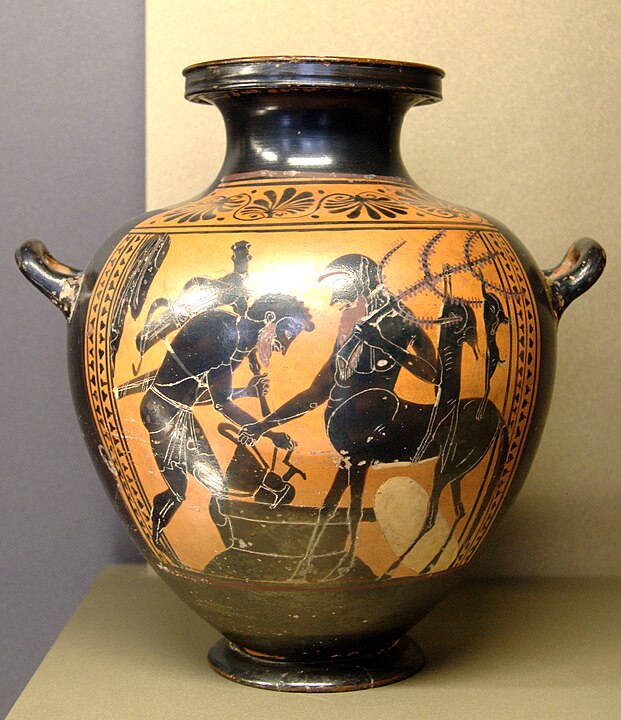
In this event, unfortunately, Pholos died too. The centaur accidentally dropped a poisoned arrow on his foot while he was examining it. Nevertheless, the gods rewarded Pholos for his hospitality with the constellation Centaurus.
3- Nessus
The myth of the centaur Nessus also has to do with the stories of Heracles. Nessus was one of the centaurs who survived the Centauromachy. After the conflict, he escaped to the river Euenos where he lived and helped the passers cross the stream of water.
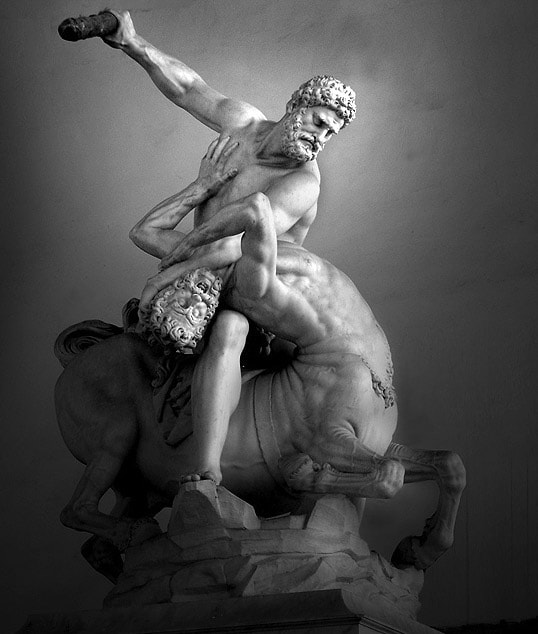
When Heracles was traveling with his wife, Deianira, they tried to cross a river but found it difficult. Nessus then appeared and offered help, taking the hero’s wife on his back across the river. The centaur, however, tried to rape the lady, and Heracles killed him with a poisoned arrow. Nessus told Deianira to take his blood, which would serve her as a love potion if Heracles ever fell for another woman. In reality, the blood of the centaur would be the poison that would later kill Heracles.
4- Eurytion
Eurytion is one of the lesser-known but important figures among the centaurs in Greek mythology. He plays a significant role in the story of the Centauromachy, the famous battle between the Lapiths and the centaurs.
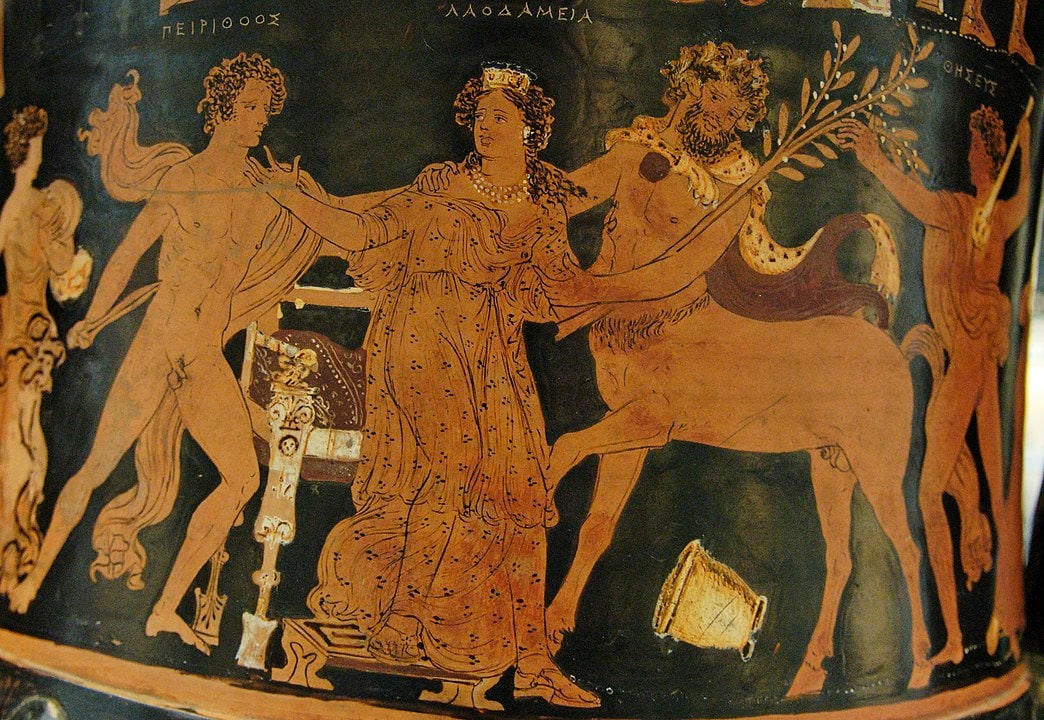
Eurytion’s most notable moment in mythology arises at the wedding of Hippodamia, the daughter of Pirithous, king of the Lapiths. Invited to the feast along with other centaurs, Eurytion becomes intoxicated with wine and attempts to carry off the bride, Hippodamia, against her will.
This act of outrageous disrespect and violation against Pirithous and his family ignites a fierce battle known as the Centauromachy, a battle that symbolizes the struggle between civilization and barbarism. Eurytion’s reckless actions result in a disastrous loss for the centaurs, and he himself is killed during the clash. His story serves as a cautionary tale of the dangers of unrestrained impulses and the lack of respect for societal norms and laws.
5- Hylonome
In Greek mythology, Hylonome is a distinctive figure as one of the few female centaurs, or centauresses, mentioned in the ancient myths. Her story is primarily associated with love and loyalty, in stark contrast to the more violent and debauched tales typically associated with centaurs.
Hylonome was deeply in love with the centaur Cyllarus, who was said to be exceptionally handsome. Their bond was extraordinarily strong, often depicted as one of the few examples of monogamy and mutual affection among the centaurs, who were generally portrayed as lustful and wild.

During the Centauromachy, Cyllarus was mortally wounded. Unable to bear the prospect of life without her beloved, Hylonome threw herself onto the same spear that had killed Cyllarus, choosing to die by his side rather than live without him.
Her story stands out in the brutal mythology of the centaurs, offering a narrative of romantic love and loyalty. It demonstrates the complexity of the centaurs, showing that they were capable of deep emotions and were not solely driven by lust and rage. The tale of Hylonome and Cyllarus remains a tragic but beautiful testament to love’s power and the lengths one might go for it.
The Centaurs and the Gods
The Centaurs were connected with Dionysus and Eros since these creatures carried the chariots of both gods. Their frenzied behavior when it came to wine drinking and sex, also connected them to these gods, who were the deities of those traits.
Influence and Symbolism of the Centaurs
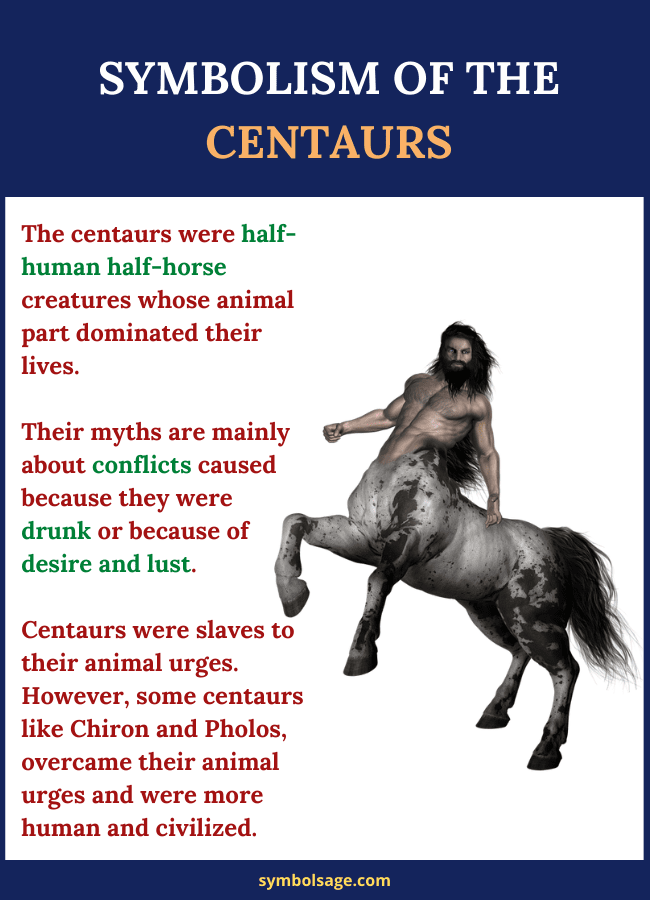
The centaurs were half-human creatures whose animal part dominated their lives. Their myths are mainly about conflicts caused because they were drunk or because of desire and lust. They were slaves of their animal side with no control over their deeds when they were under the influence of their passions.
Rather than a place in the heavens, they were granted a place in the underworld. The centaurs are one of the creatures who dwelt at the gates of the underworld to guard it with Cerberus, Scylla, and the Hydra.
In modern literature, their depictions show them as civil creatures with their human side overpowering the animal desire. In Rick Riordan’s Percy Jackson and the Olympians and C.S. Lewis’ Narnia, the centaurs are articulated advanced creatures as civilized as humans.
Greek mythology, however, shows their true character to be wild and lawless. The Centaur is a symbol of the overpowering of the animal over the human.
In Brief
The centaurs were fascinating creatures known for their hybrid nature, but their essence was tainted with the weaknesses of their minds and the passion of their animal side. Either way, the centaurs remain as one of Greek mythology’s most recognized creatures.








